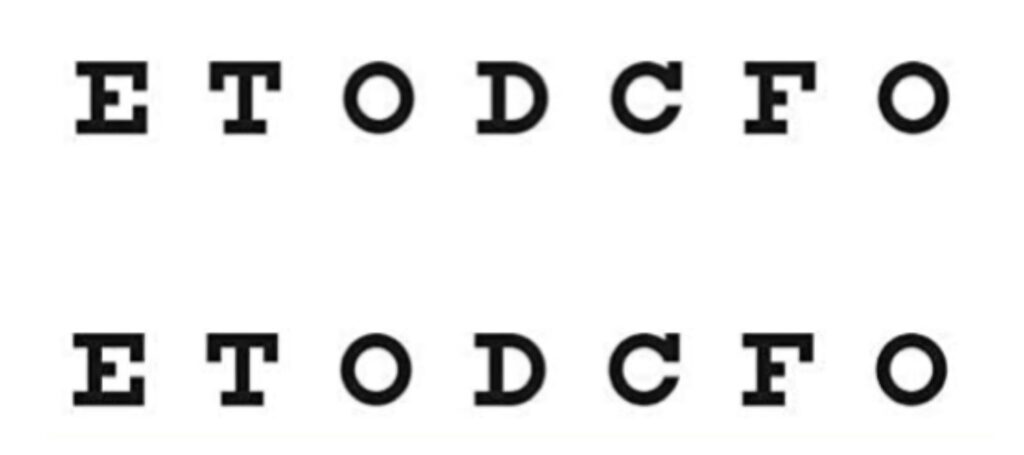The procedure makes use of prisms to break the fusion between two eyes. The vertical prisms of the same amount are used to maintain equal degradation of image quality which is caused by prism. Don’t use horizontal prisms, as a compensatory positive and negative fusion vergence will make it difficult to break fusion or very large prism power will be required. The fogging lens is also placed along with prisms to relax accommodation.

Procedure of Vertical prism dissociation method
- Occluders are placed in front of both eyes.
- The vertical prism of equal power (usually prism power between 3-5 Prism diopters) is placed in front of each eye with their base direction opposite to one another (3 prism diopter base down in front of the right eye and 3 prism diopter base up in front of the left eye).
- Then the same amount (typically +0.75 DS to +1.00 DS) of the fogging lenses are placed in front of each eye.
- Target which has letters arranged in vertical lines is used with visual acuity score of 6/12.
- Only one eye of the patient is un-occluded, and the patient is asked about the clarity of the line. The correct response should be line is blurred but he or she can read it. If they say the line is clear add additional +0.25 DS in front of both eyes till the line just gets blurred, but still able to read.
- Another eye of the patient is un-occluded. At this point, the patient should see two images of a line or a single object, where the upper line is seen by the right (base down prism) and the lower line is seen by the left eye (base up prism). If the patient is unable to see two lines image, the patient trial frame or phoropter is adjusted for pupillary distance or might be suppression of one eye.
- The patient is then asked which line letters are clearer or easier to read compared to other line. If the patient’s response is different in clarity, then add +0.25 DS in front of the clear-seeing eye. E.g., if the patient says upper line letters are clearer and sharper than lower line then add +0.25 DS in front of the right eye. Continue to add +0.25 DS till the patient reports both line letters are equally clear and sharper.
- Often patients fail to report equal clarity. E.g., if the patient reports upper line letters are clearer and sharper and you add +0.25 DS in front of the right eye and the subject is again asked about clarity, but the response is now lower line letters are clearer and sharper than upper. At this point, it becomes very confusing whether to choose the previous combination of the lens or this combination which shows the bottom line letter clearer and sharper. To overcome this both combinations are again shown to the patient and the patient is asked to report the least difference between the two lines. The least difference or closest match combination is selected. An alternative approach is giving good clarity to the dominant eye.
- Once the patient’s acuity is balanced, prisms are removed, and the patient is defogged binocularly by removing plus power in 0.25 steps or by adding minus power in 0.25 steps until Maximum best visual acuity is achieved.
The advantage of the Vertical prism dissociation method is that both eyes, images are shown simultaneously so it becomes very easy to compare images seen by both eyes. So, this test should be a choice for patients who have short-term memory loss.
The disadvantages of the Vertical prism dissociation method are, too many lenses and prism involvement so it becomes a little difficult while doing this procedure while using a trial frame compared to a phoropter. And most trial sets are only equipped with one prism for single prism power, so if you want to do this procedure an additional prism power lens should be kept for this test.
Lecturer (Nethradhama School of Optometry)
Moptom
